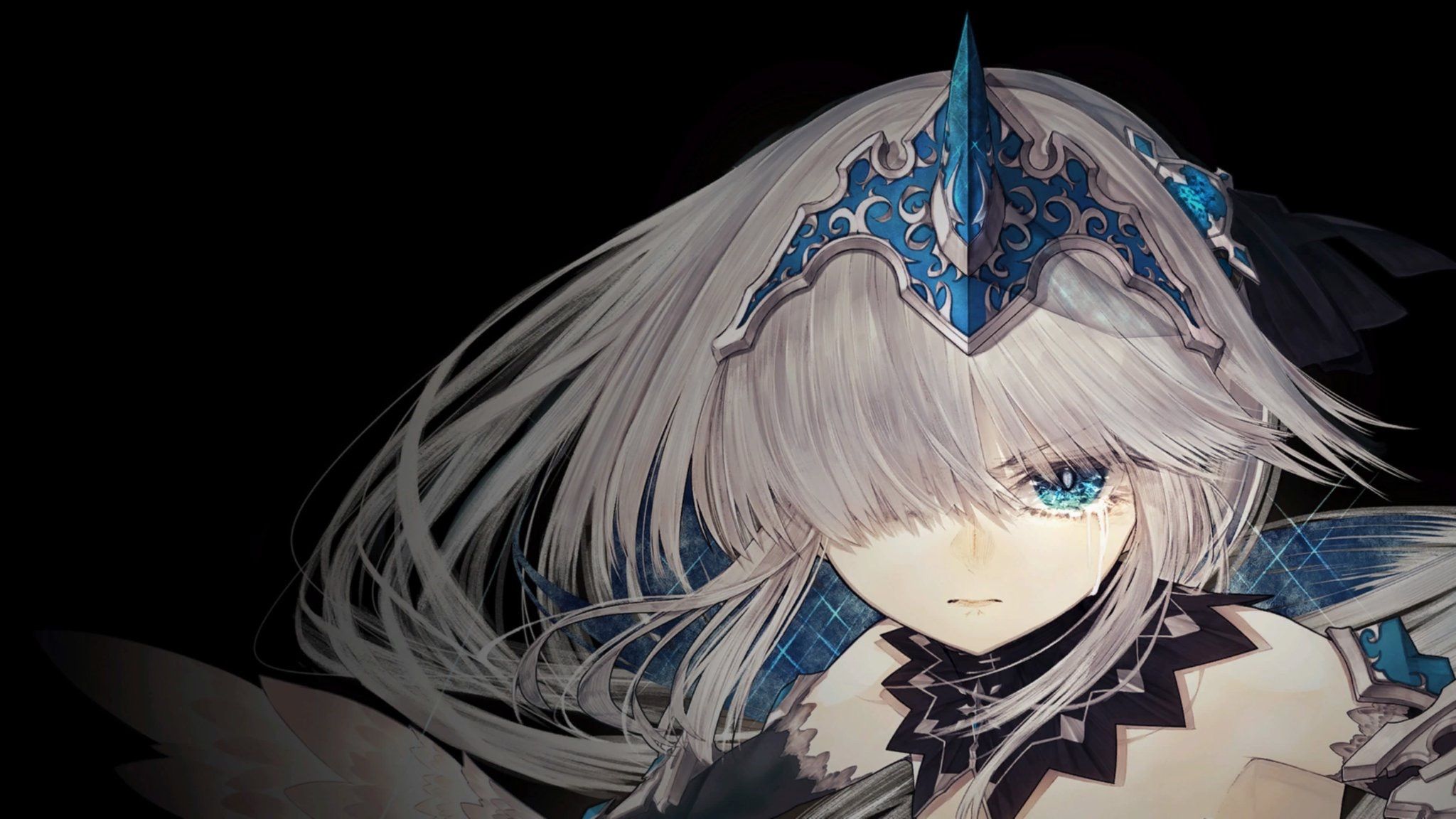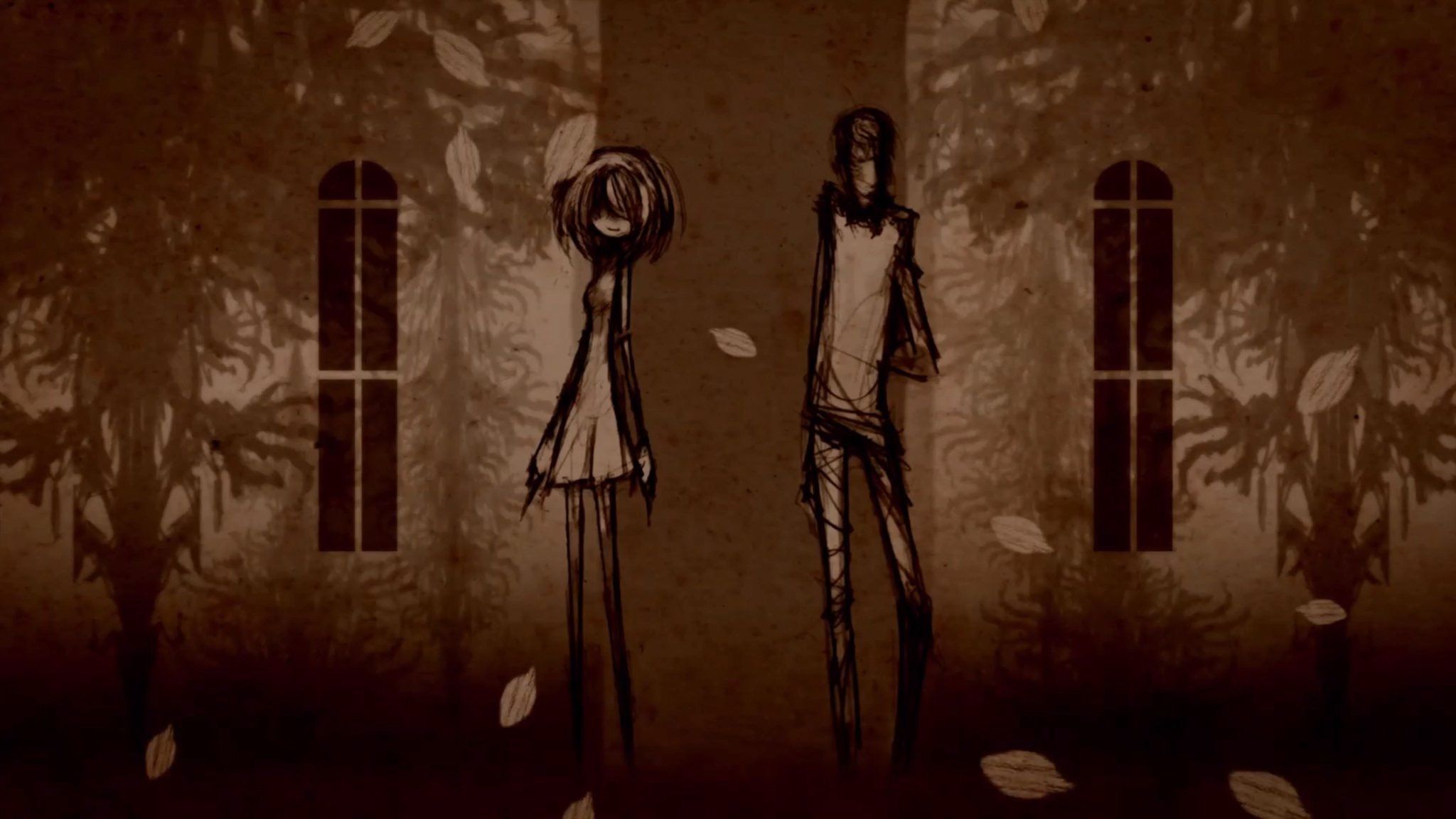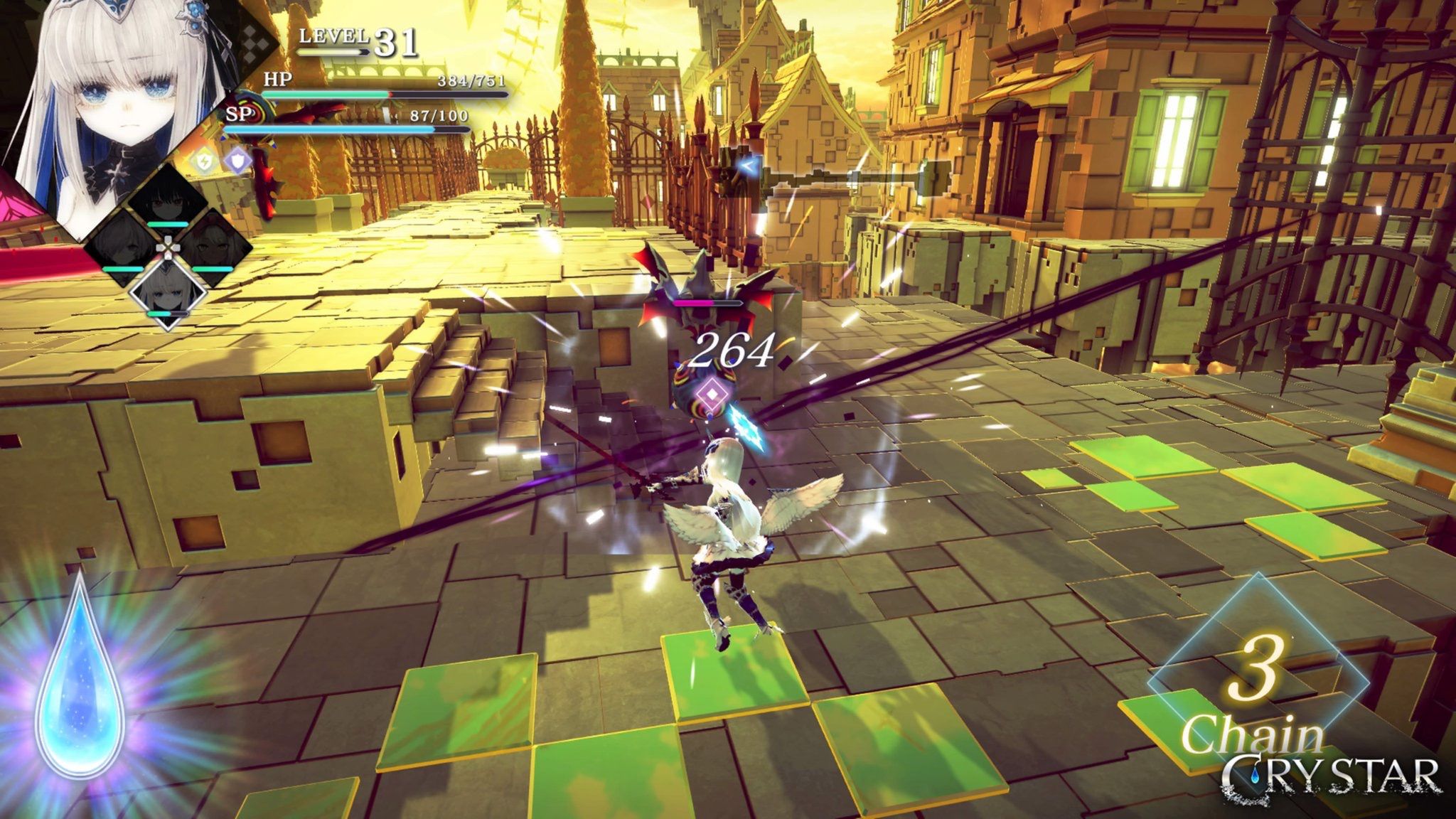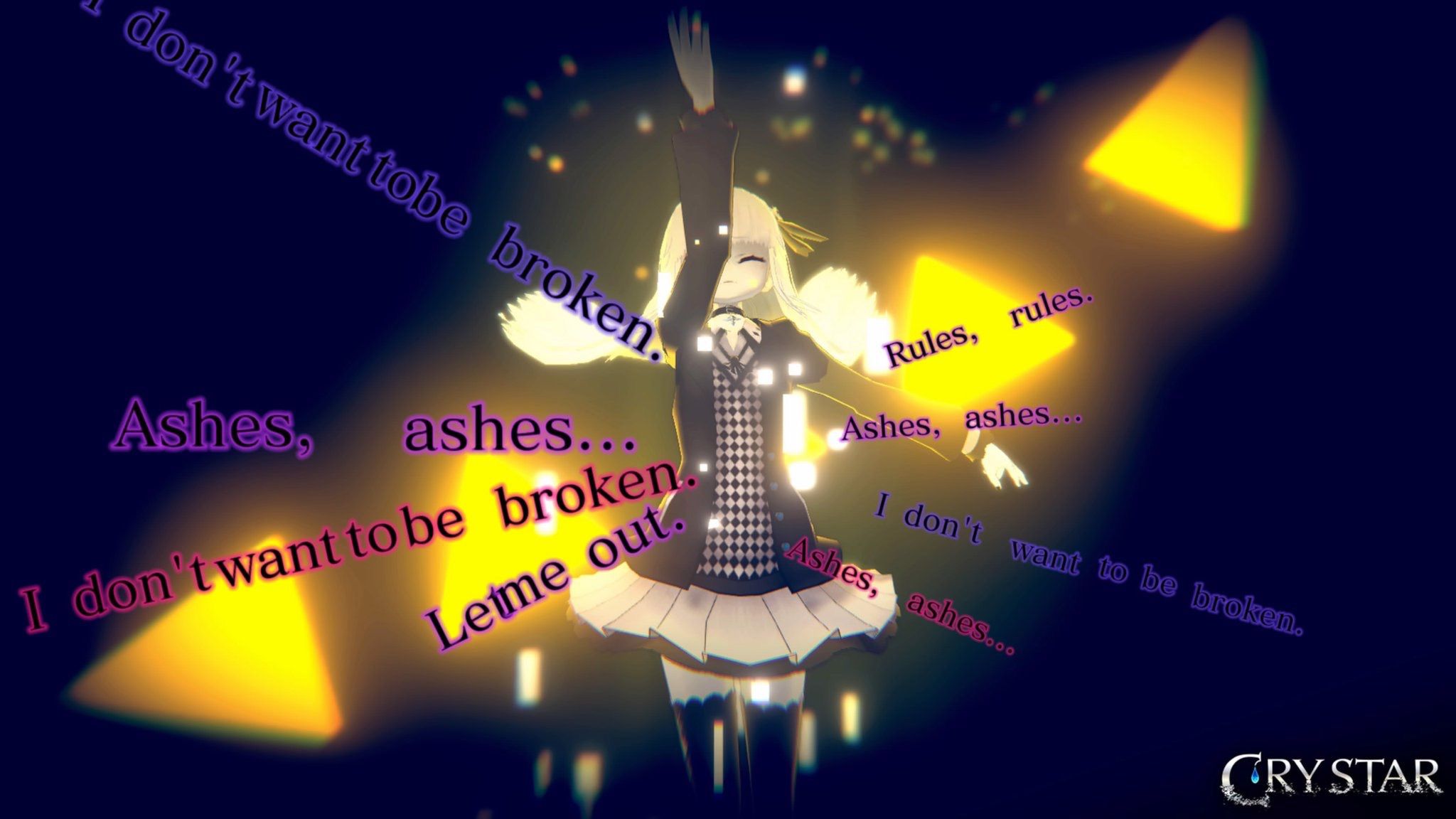Crystar has one of the most interesting narratives I have experienced in video games from recent memory. Almost every time I was in between play sessions, all I could think about was the story and where it could possibly be heading. Time and time again, it surprised me with its dark themes which are presented immediately from pressing start on the main menu. Crystar is a humanistic story revolving around characters who are dealing with severe trauma and finding their own ways of coping with it. Some of them try to get revenge while others pursue justice. Unfortunately, Crystar does not have much else worth praising about.
Crystar primarily takes place in Purgatory, similarly to what is known in the Catholic faith. Instead of being a stopping place where souls purify themselves of their sins, it is where souls, which take form as a butterfly, go to eventually be reincarnated. The story stars Rei Hatada, a shut-in fifteen-year-old girl (who likely deals with depression) being transported to this postmortem place with her younger sister Mirai. She is tricked into killing Mirai by a Revenant called Anamesis. A Revenant is a dead person's soul who regains self-consciousness. Normally, their goal is to absorb enough souls to come back to life through a process called Revival.
[pullquote]"Crystar has one of the most interesting narratives I have experienced in video games from recent memory."[/pullquote]
With the help of a diverse cast of party members, Rei's mission is to obtain Revival for her sister. The managers of Purgatory, Mephis and Pheles, offer to assist Rei by becoming their executor. Her job is to hunt down Revenants and get seven Idea, crystallized tears from a self-conscious person. After receiving the Idea, Mirai will be granted Revival.
The other party members that accompany Rei through the layers of Purgatory are Kokoro, Sen, and Nanana. Including Rei, each one of them has dealt with a horrible event that has stricken them and has led to Purgatory. When learning more about each character, visuals are presented gorgeously in this grim and messy pencil-like art style. I knew immediately from the prologue that Crystar was going to be dark, but how far the developer Gemdrops was willing to go was surprising at times.
The cast of heroes are more or less enjoyable, however, one of them I found to be pretty annoying for most of my time with the game. Luckily, once I got to know more of their background I really came around to them. The party's goals differed from Rei, but the motivations were sound and something I could get behind. During conversations, each character uniquely stood out by the beautifully hand-crafted art designs that I could look at for hours. I appreciated it so much because the in-game characters just look plain ugly and the animations during scenes are stiff and sharp. The voice cast also did a great job in giving Rei and her party their own distinct personality.
[pullquote]"By the end of my 30-hour journey, I was still doing the same rinse and repeat combos."[/pullquote]
During missions, known in the game as Ordeals, Rei and the party travel through Purgatory defeating enemies and collecting items. While progressing through each chapter of the game I would run into new enemies. However, there just wasn't a wide enough variety to keep combat interesting. I would quickly learn the best way to take down each type of enemy and the order of importance as to which enemies should be taken down first.
Being an Action RPG, there isn't a lot of evolution in the gameplay of Crystar. I would hack away at each enemy doing a combo, however, I didn't gain any new abilities as I progressed. By the end of my 30-hour journey, I was still doing the same rinse and repeat combos. Instead of abilities that changed up the combat, characters have skills that are powerful physical and magical attacks that consume SP. I was able to have four different skills equipped at once. There would be one where I would charge one big slash attack knocking enemies back while doing a high amount of damage. Another would let me shoot down beams of light on enemies in a certain radius. These abilities were mostly fun to use and were the only thing keeping combat from being a complete slog.
The combat mechanic that separates Crystar from other RPGs is the tear gauge. As you hit enemies, your tear gauge will fill up. The higher the hit chain gets, the quicker the gauge will fill. Players can also fill up the tear gauge by crying which drains their SP. Once full, players can summon their Guardian, a manifestation of one's self, that allows you to deal a slew of additional damage. Before the gauge depletes you can unleash a special attack that is unique for each party member. It is a cool mechanic, but with how easy the game is, I never felt much reason to use it outside of trying to finish the fight faster.
There are three standard difficulty options that are in the game: easy, normal, and hard. The game starts on normal, but you can switch the difficulty freely through the menu. I ended up switching to hard because I regularly like a challenge when I play games. Even on hard, the game was a cakewalk the majority of the time I was playing.
In between missions, Rei will go back to her bedroom in the real world. This is where players can do a variety of different things. Whenever I defeated a Revenant in Purgatory, I would receive an item called torments. Torments are soul fragments from other people. These would appear in different forms of thought around Rei making it feel like she is being well, tormented. I thought it was a really nice touch because some of the villains in the game seem to suffer from a mental disorder. I could purify the torments in Rei's room by crying (an ongoing theme as you can see), turning them into sentiments. Equipping sentiments to my party would give them upgraded weapons and increase their stats. By gaining duplicates, I could fuse sentiments together making them more powerful.
At the beginning of each mission, there is also a shop you can visit. Players can buy items that help create sentiments as well as heal and cure status effects. Ridiculously, the shop does not give you an option to sell. Quickly my inventory became crammed full of items that I never needed. The only time I was able to get rid of items was when my inventory maxed out.
When phoning in allies, the characters would discuss their feelings regarding what was currently happening in the story, but at times, would also talk about things more personal to them, detailing their backstory. In Rei's room, players can also change outfits, listen to music, and pet Rei's dog, Thelema. I mean, who doesn't want to pet a dog? The nicest feature though is reading through the Memoirs of the Dead. After defeating a Revenant, you can read through a log giving background on who they were in the real world and how they died.
[pullquote]"The narrative of Crystar is worth experiencing because of how real and relatable it is."[/pullquote]
Throughout each chapter, I would delve through a deeper level of Purgatory. While the environments change, most of the time being lovely and colorful, the dungeons are boring to explore. On a base level, each dungeon is just a maze progressing bit by bit defeating enemies until you can find the end. There are no puzzles or platforming, just running through each dungeon. I was even able to run through new story missions without defeating any enemies if I wanted to.
Without going into spoilers, there is a point in Crystar where I had to go through three chapters of the game over again twice. For story purposes, the reason behind it is justified and really cool. It was just frustrating that I was playing through the same generic levels numerous times. It got to a point where it was driving my head in. I ended up switching the game's difficulty to easy to dash my way through each level because I just wanted to see what happened next in the narrative more quickly.
Crystar will likely not receive as much attention from a wide western audience, which is unfortunate. Even though it might just look like another game featuring teenage anime girls, that didn't make the narrative any less compelling. What made Crystar's story so impressive was how it always kept me on my toes. Always introducing new plot points when I kept thinking I had everything figured out. While there was a lot to keep in mind, everything that happened in the story made sense. The narrative of Crystar is worth experiencing because of how real and relatable it is. It's just a shame that the rest of the game couldn't have been on the same level.




